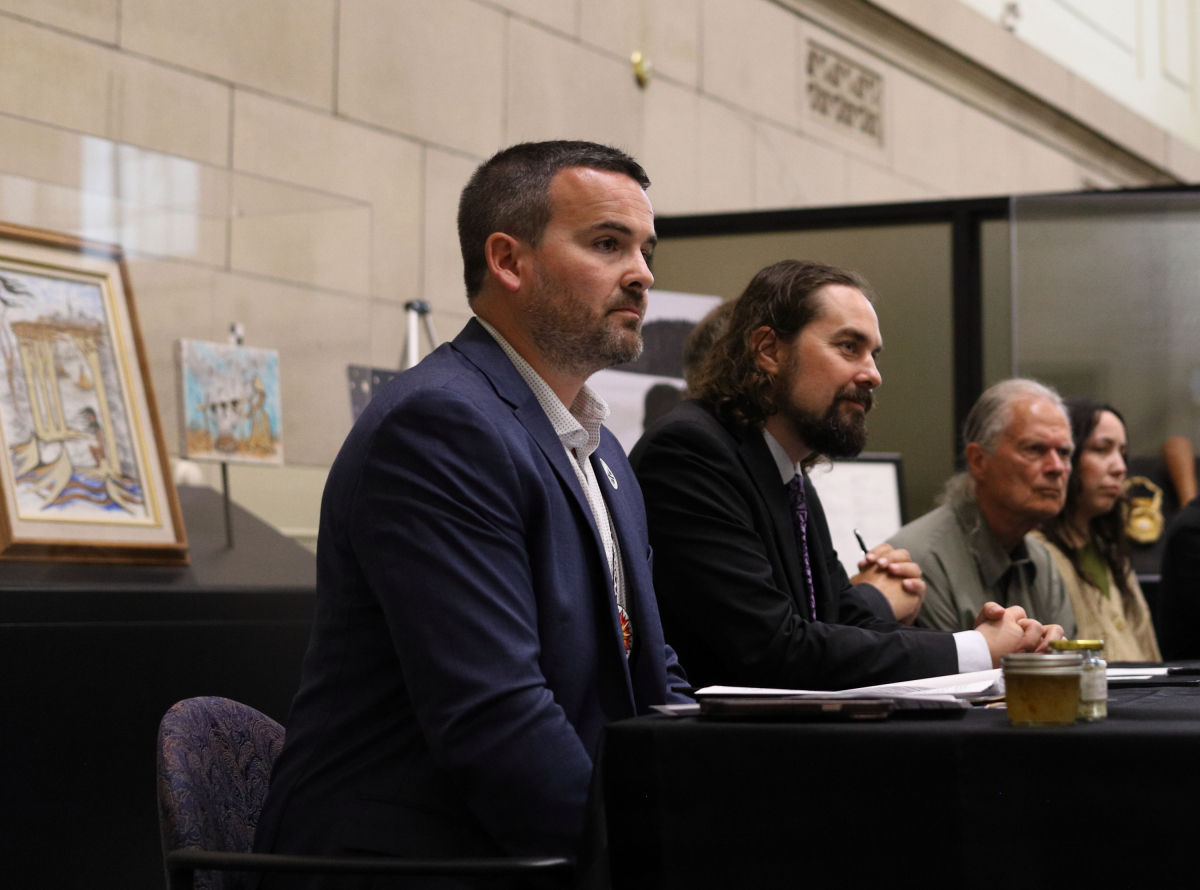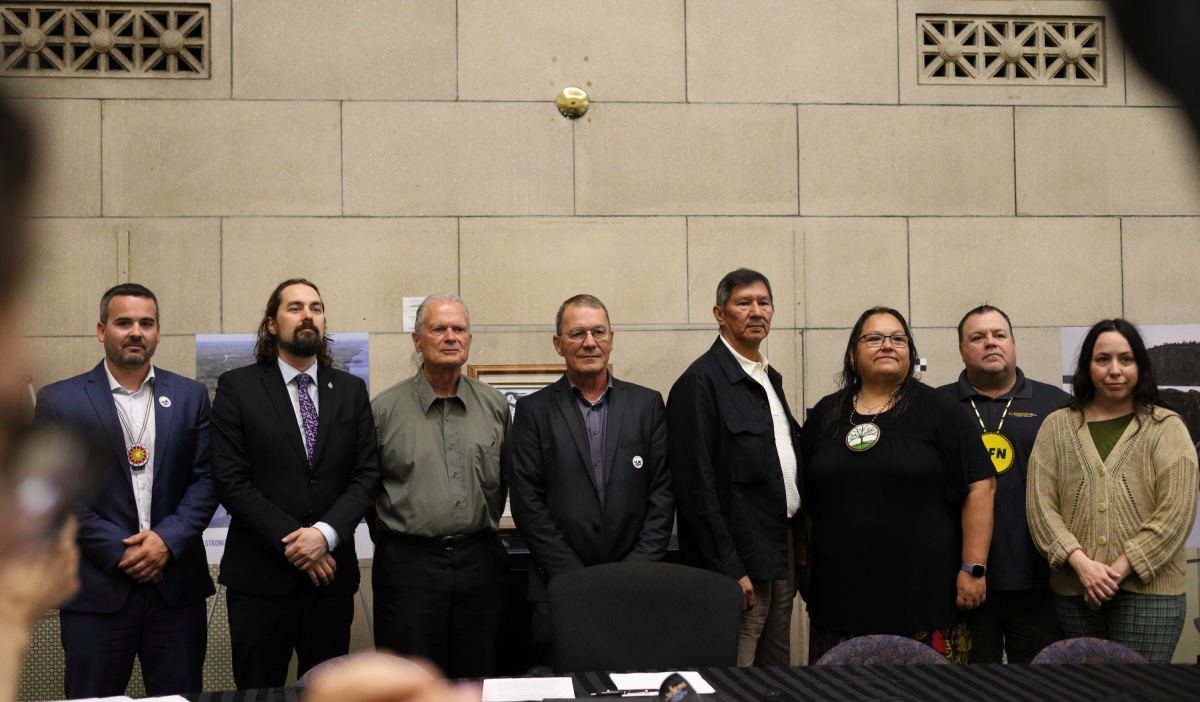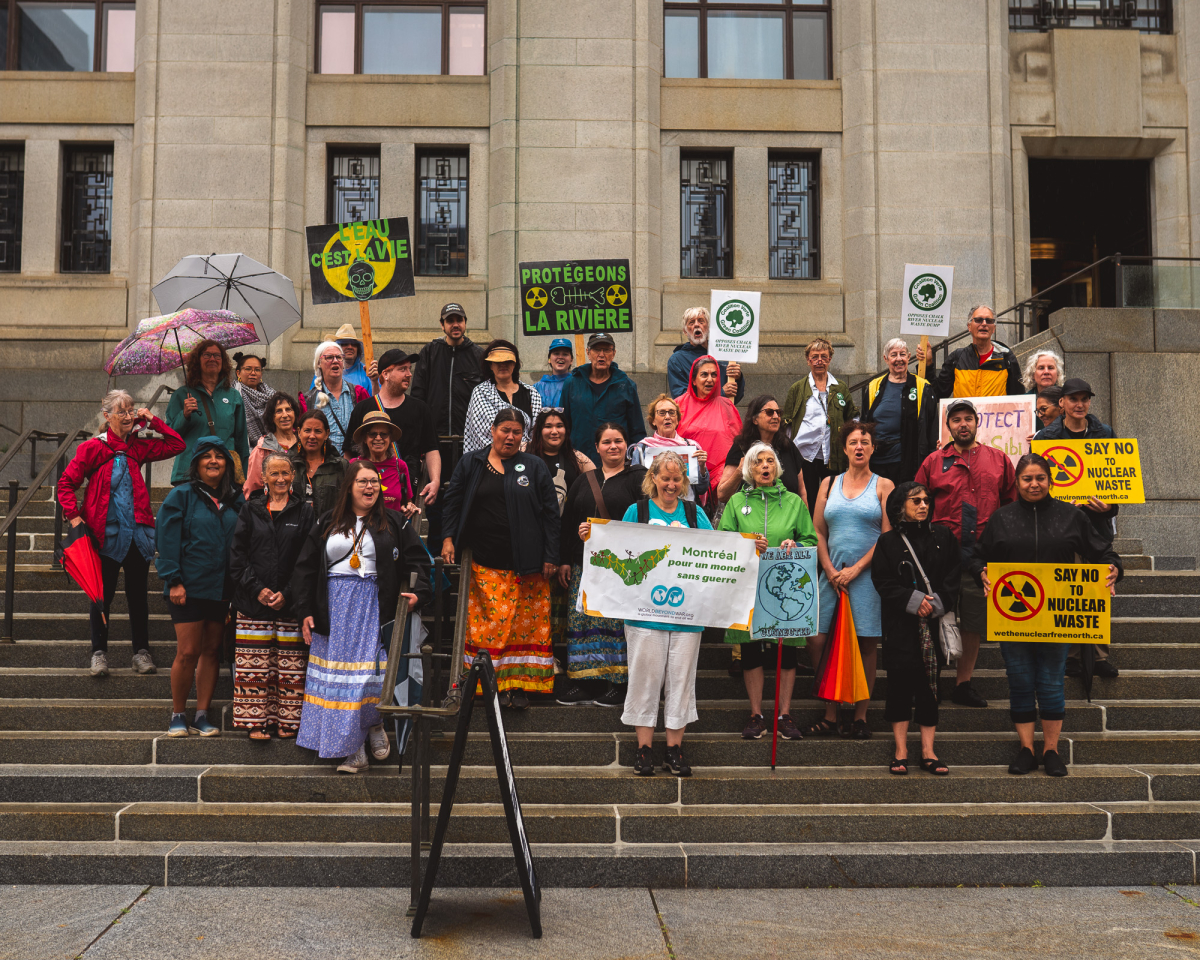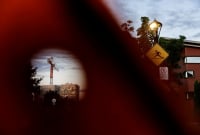Support strong Canadian climate journalism for 2025
A First Nation concerned about approval of a nuclear waste disposal facility near the Ottawa River was before federal court this week to challenge the decision.
The Canadian Nuclear Safety Commission greenlit the project on Jan. 9 and less than one month later, Kebaowek First Nation filed for a judicial review.
Kebaowek’s legal challenge is centred on the United Nations Declaration Act (UNDA), which enshrined the United Nations Declaration on the Rights of Indigenous Peoples (UNDRIP) into Canadian law. The declaration specifically references the need for free, prior and informed consent when hazardous waste will be stored in a nation’s territory.
Kebaowek argued in court that Canadian Nuclear Laboratories — the private consortium responsible for managing the Chalk River nuclear site — did not secure the First Nation’s free, prior and informed consent during the licensing process, as mandated under Canadian law, when it was looking to store the waste at a site about a kilometre from the Ottawa River. The Ottawa River (known as the Kichi Sibi in Algonquin) holds immense spiritual and cultural importance for the Algonquin people and is a source of drinking water for millions.
Canadian Nuclear Laboratories wants to permanently dispose of one million cubic metres of radioactive waste in a shallow mound as a solution to waste accumulated over the last seven decades of operations and into the future. The company said the containment mound will only hold low-level waste.
A former employee at Chalk River told Canada’s National Observer a portion of the waste destined for the mound is a “mishmash” of intermediate- and low-level radioactivity because prior to 2000 there were inadequate systems to properly label, characterize, store and track what was produced at Chalk River or shipped there from other labs. Intermediate-level waste remains radioactive for longer than low-level waste and requires disposal deeper underground.
“It's such a huge project that I don't think most people are aware of just how big this is,” Coun. Justin Roy of Kebaowek First Nation told Canada’s National Observer in an interview after a press conference in Ottawa on July 10.

“We're not talking about a pipeline that might not be there in a couple dozen years, or a mine that's going to be up and running and close in 20 years, or a bridge that might be torn down one of these days. We're talking about a huge mound that has a life expectancy, expectancy upwards of 500 years,” Roy said.
The First Nation is asking the Federal Court of Appeals to reject the nuclear safety commission’s decision to greenlight the facility and declare that the commission breached its duty to consult Kebaowek.
Kebaowek was in federal court July 10 and 11 to make its case that the project approval should be set aside or reconsidered. The First Nation argued two main points: First, that the nuclear safety commission refused to take the Canadian UNDRIP act into consideration, and that means the consultation process was flawed from the outset.
Second, the nation argues the project will rely largely on a forest management plan that has yet to be created to mitigate environmental impacts, Coun. Justin Roy of Kebaowek First Nation told Canada’s National Observer in an interview.
Canadian Nuclear Laboratories’ lawyers argued the commitment to create a forest management plan and have it approved by the nuclear safety commission is appropriate, and disagreed with Kebawoek’s description of it as a “blank piece of paper,” saying it is intended to be a “living document” and respond to different situations yet to arise. The company’s testimony on July 11 also highlighted different instances — letters, phone calls, in-person meetings — where it engaged with Kebaowek First Nation.
Justice Julie Blackhawk will issue a decision at a later date.
A ‘litmus test’
When Parliament was in its consultation process regarding the United Nations Declaration Act, First Nation leadership across Canada spoke up because chiefs thought the legislation “needed to have teeth,” Lance Haymond, Chief of Kebaowek First Nation said in an interview. However, the legislation was never re-written to give it weight, leading to a “failure of implementation from the beginning,” he explained.
“Here we are stuck with a piece of legislation that could be stronger,” Haymond said of testing the United Nations Declaration Act (UNDA) in court over the nuclear waste facility. The success or failure of the judicial review will serve as a litmus test of how much sway the new Canadian law holds in the courts, Haymond said.
“Our case will hopefully demonstrate how it can be applied in a real world situation,” he added.
This judicial review is one of three legal challenges against the near surface disposal facility.

At a July 10 press conference, Sébastien Lemire, Bloc Québécois MP for Abitibi-Témiscamingue, emphasized his party’s support for the legal challenge. Lemire also promised continued support at future press conferences, in Question Period and in work at committees like the Standing Committee on Indigenous and Northern Affairs.
Canadian Nuclear Laboratories is run by a consortium of private companies (including AtkinsRéalis, formerly known as SNC-Lavalin) and is contracted by the federal government to operate its laboratories and deal with waste.
Over 75 years, Chalk River Laboratories developed CANDU reactors, did nuclear weapons research, supplied the United States’ nuclear weapons program with plutonium and uranium, and at one time was the world’s largest supplier of medical isotopes used to diagnose and treat cancers.
About 60 people attended a public rally in front of the Supreme Court on July 10 to support the First Nation, according to Vi Bui with the Council of Canadians.
It’s not the first time the public has given their support.
Kebaowek’s legal fund has been largely crowdfunded and supported by Raven Trust, a charity that raises legal funds for Indigenous nations, Haymond said.
If Kebaowek loses, it’s still unclear if they will appeal the decision, he added.
“Our ancestors would probably roll over in their graves if they were to hear that we would just allow a nuclear waste dump that's going to hold one million cubic metres of waste adjacent to the Ottawa River,” Roy said. “We are people who have been here since time immemorial; this mound, if it proceeds, it can maybe outlast all of us here.”
Natasha Bulowski & Matteo Cimellaro / Local Journalism Initiative / Canada’s National Observer







Comments